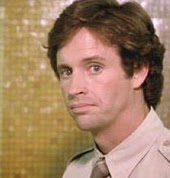"Lowry ... stood across the road from his subjects and observed. Often enough there are a number of individuals in a crowd peering back at him. They invite us momentarily into their world, like characters on a stage sometimes do, breaking the fourth-wall illusion."
- Sir Ian McKellen
What is the fourth wall? Surely you´ve noticed in theater, in TV and in film the background sets are 3 walls and the fourth one is an imaginary one. Because the audience or the camera is placed there. Ever once in a while an actor or character will notice there is an audience out there becoming aware he is in fact a fictional character. But one that can interact with us by joking, explaining something or just saying whatever he or she is thinking.
Jean-Pierre Jeunet´s "Amelie" made Audrey Tautou an INSTANT ICON by staring at the camera with a smile and a spoon.
In Jay and Silent Bob Strike Back, one of Ben Affleck's characters says, "A Jay and Silent Bob movie? Who'd pay to see that?" At which point all three of them turn and glare at the audience.

Have you ever noticed when suddenly a movie character stops everything and looks at the camera to talk to the audience?
That is called "BREAKING THE FOURTH WALL". It has no genre, no limitations, it can be in any sort of movie.
Disney´s THE EMPEROR´S NEW GROOVE made its main character, emperor Kusco explain the plot and letting us know who´s the victim of the story.
At the beggining of " Lord of War "Nicolas Cage as talks directly to the audience to set the tone of his character.

In Annie Hall, a puffed up character: Man-In-Theatre-Line, spouts nonsense about Marshall McLuhan's theories of media. Allen's character Alvy argues with him, and then pulls the real Marshall McLuhan into the shot to back up his argument. Once that is done, Alvy faces the audience and says "Boy, if life were only like this!" He does this on many other occasions too.
Dates back to the Lumière brothers and the first films made for public viewing in 1895—specifically, The Photographical Congress Arrives in Lyon, in which several of the photographers wave or doff their hats to the camera.
Alfred Hitchcock made the most freightening scene as Anthony Perkins last gesture in Psycho is stearing back at you.
Richard Donner´s Superman at the end of the movie just flying away.
In
Sam Wiseman´s
GEORGE OF THE JUNGLE it is used as a comedic device.
Steve Pink´s
Hot Tub Time Machine has the scene where the characters realize that the hot tub time machine has, indeed, taken them back in time. When this dawns upon one of the characters, he says, "It must be some sort of... hot tub time machine," and then turns to stare at the audience.
In John Landis TRADING PLACES Eddie Murphy is asked if he knows ...what orange juice is? he responds by staring to the camera.
Quentin Tarantino´s Death Proof.
Martin Scorcese´s Raging Bull.
Johnathan Demme´s The Silence of the Lambs.
Richard Donner´s The Omen, in which five-year-old Damien, attending his adoptive parents' funeral, looks directly at the audience and smiles.
Breaking the fourth is not only for characters it can be also elements that touch the screen or interact with the actions in the movie,such as water, dirt or blood, intentionally sticking to the camera as it aknowledges the existence of that camera. Lens flare can also be considered as breaking the fourth wall. Alfonso Cuarón does this in Harry Potter and the Prisoner of Azkaban and so in GRAVITY.
In movies as in literature, writers often break the fourth wall of a story by having their narrator or characters address the reader either in footnotes or other literary devices, thus having the film or novel itself recognize what it is (a story).
















Me encantó 😃
ReplyDelete